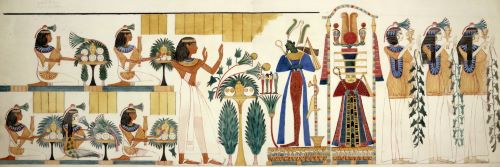

Of all the cradles of civilization, none have become so iconic as Ancient Egypt. Between fanciful stories of opulent pharaohs and cursed tombs, it can be hard to imagine what day-to-day life was like for those who didn’t live at palaces or temples. However, we do have some idea of what Egyptians ate daily.
How Do We Know?
It’s not easy to peek back at the year 2,500 BC and figure out what was in people’s stomachs. However, we have enough depictions of ancient life through paintings, hieroglyphs, and even microscopic residue on jars, all of which can be used to make a pretty good estimate. Needless to say, Ancient Egypt addresses 3,000 years of history where diets and customs may have changed over time.
While parts of its cuisine may have changed, Ancient Egypt has remained a cultural fascination ever since the Rosetta Stone was discovered in 1799. Today, it influences culture through movies, shows, and novels, and has even become prominent in online industries like iGaming. Many digital slots like Book of Ra focus on Ancient Egypt, incorporating the now-iconic symbols of Ra, Horus, Anubis, and the Book of the Dead into their reels. Some Egyptian slots glamorize or feature magical elements while others play it close to reality, but more than any other ancient civilization, Egypt leads the pack when it comes to depictions in slot games. You don’t see many slot games based on Sumer or the Indus Valley, after all.
As for why we want to know – Ancient Egypt exists at a perfect cross-section between the known and unknown. We don’t understand a lot about them but they left giant pyramids and sprawling tombs that are undeniable and certainly caught our attention. Through the magic of science, we can at least guess what they were eating while hiding Alexander the Great or fending off the Sea People.
Egyptian Edibles
Let’s start with the basics – there was a lot of bread. On all continents, most lower-class people subsisted on cereal grains and the exciting range of gruel you could make from it. Preparation methods differed between the Old Kingdom, the Middle Kingdom, and the New Kingdom as clay ovens developed. They even had fun with their baking, evidenced by bread loaves shaped like animals, though most were conical-shaped. We have had fun with it too – because it’s still possible to make bread using Ancient Egyptian yeast.
The next staple was a fermented drink, again something that was found across much of the ancient world. It would have been consumed daily and used as a currency in certain parts of the kingdom. The likeliest brewing method involved breaking bread over a sieve and washing it with water before leaving the mixture to ferment. While they form the backbone of an Egyptian diet, these two items were complemented by other food. They didn’t have chicken back then, so duck, goose, or pigeon was most often on the menu. They kept poultry and overfed them to improve the taste, meaning that the Egyptians were the first recorded inventors of foie gras. They did have cattle, though certain religious peccadilloes held them back from consuming female cows. It’s thought that a steady supply of beef and beer is what kept the Great Pyramid building crew from exhaustion.

Where vegetables are concerned, tubers, tiger nuts, and lilies were consumed. Legumes and pulses were also in abundance across the Middle East, like chickpeas. Their favorite fruits would have been relatively small and sugary dates and figs that thrived in the harsh Egyptian summers of the time.


